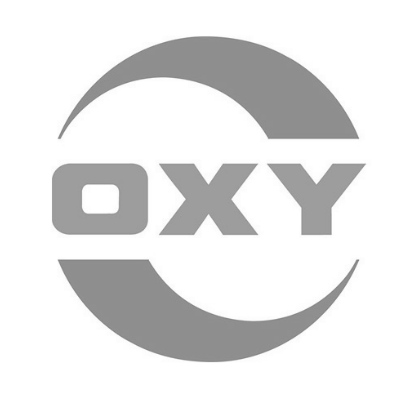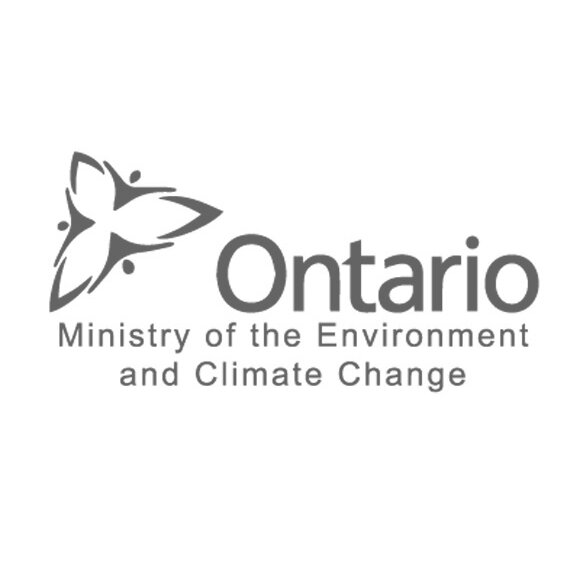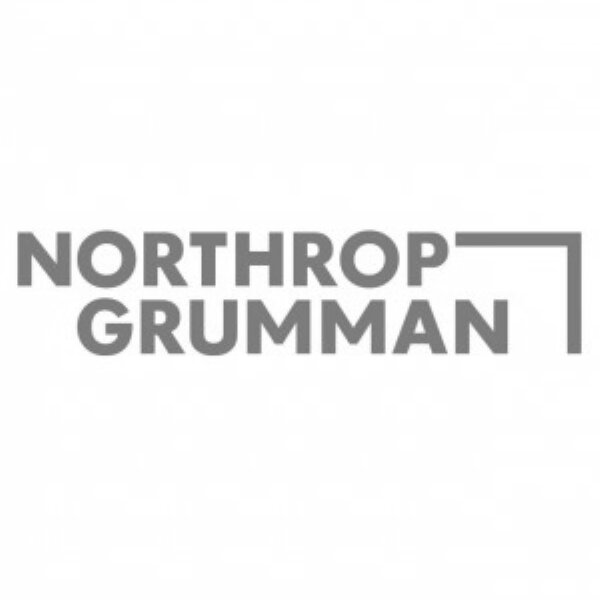
GHD Digital
3D DATA VISUALIZATION MODELS
BRIDGING WORLDS:
UX Design and 3D Environmental Data Modelling
At first glance, UX design and 3D environmental data modeling may seem worlds apart, but they share a deeply aligned philosophy: transforming complexity into clarity through human-centred, purpose-driven design.
Both disciplines begin with a rigorous discovery phase, where designers and modellers immerse themselves in context. For UX, this means understanding user behaviors, pain points, and goals. For environmental modeling, it involves analyzing site-specific conditions, whether it's a leaking fuel tank beneath a gas station or a geophysics survey of a massive earthen dam. In both cases, success hinges on uncovering nuanced constraints and stakeholder needs early on.
From there, the work becomes a strategic act of tailoring outputs to audience and purpose. UX designers craft interfaces that resonate with users’ mental models and workflows. Similarly, 3D modellers build visualizations that speak directly to geologists, engineers, and data scientists, translating raw data into intuitive, actionable insights. Whether it's a salt dome or a sinkhole, the model must be legible, relevant, and decision-ready.
Cross-functional collaboration is essential. UX designers partner with developers, researchers, and product managers; modelers work alongside geochemists, geophysicists, and environmental engineers. In both realms, communication is key—aligning on goals, iterating on feedback, and ensuring the final product meets technical and human needs.
The backbone of both processes is data analysis and synthesis. UX relies on user research, analytics, and behavioral patterns; 3D modelling draws from geospatial data, environmental readings, geostatistical analysis, and simulation outputs. The challenge is the same: distill complexity into clarity.
Finally, both disciplines thrive on iterative refinement. Prototypes evolve, models are recalibrated, and each version gets closer to solving the right problem. The outcome? A powerful, purpose-built solution, whether it's a seamless user experience or a data-driven visualization that helps teams manage risk and make informed decisions.
In essence, UX design and environmental 3D modeling are two sides of the same coin: strategic storytelling through design, grounded in empathy, precision, and impact.
CASE STUDY OVERVIEW
The 'WHAT'
Develop a conceptual 3D data visualization package to visualize site conditions over time, using historical and current subsurface data to demonstrate our client’s non-involvement in local groundwater contamination.
The 'WHY'
The client needed to refute claims of responsibility for a localized spill, while presenting complex hydrogeologic data to a mixed audience, including non-technical stakeholders, in a clear, compelling format.
The 'HOW'
Collaborated with hydrogeologic experts to model historical plume movement, then built an interactive 3D data model that simplified technical concepts and supported the team’s hypothesis of an up-gradient release.
My Role:
Immersive Design Solutions Lead
Timeline:
3 weeks
Outcomes:
Effectively communicated the subsurface site conditions and plume migration over time to the non-technical participants in the meeting
Saved the client hundreds of thousands of dollars in potential remediation costs
Generated additional work for the company
DISCOVERY
KICK-OFF SESSIONS
Understanding the needs of the project team is just as crucial for the successful execution of a model as the data from which it is built. By identifying the overall purpose of the model as well as the manner that it will be used I am able to determine the best format for the final product as well as which areas require the most focus and attention.
Meeting Goals:
Define purpose of model
Develop a visual presentation to support our client in an active litigation case brought by down-gradient property owners, who alleged that our client was responsible for VOC groundwater contamination affecting their site.
Clearly illustrate that the client’s property was not the source of contamination in a manner that is understandable for both technical and non-technical audiences.
Define the narrative the stakeholders are trying to explain with the model
The groundwater contamination originated from a location up-gradient of both the client’s and neighbouring property to the south.
Determine scope of work and budget
Scope:
Gather and validate multi-source environmental data (soil, water, elevation, geospatial, historical)
Process and standardize 34 sample locations with elevation approximations
Collaborate with hydrogeologic experts to model plume behaviour
Create a conceptual 3D visualization package tailored for both technical and non-technical audiences
Address challenges including limited historical data, lack of cooperation from neighboring sites, and inconsistent data formats
Considerations:
Time and resources for data cleaning and validation
Weekly team meetings, data analysis, and coordination efforts
Specialized modeling and visualization tools
Iterative design and review cycles to ensure clarity and accuracy for regulatory presentation
SECONDARY RESEARCH
I also conducted an in-depth review the client’s analytical data in order to ensure no data was missing, that units were consistent throughout the various datasets, identify any anomalies or erroneous data, diagnose any potential issues that may arise prior to the construction of the model.
Secondary research to also included examining previous reports and documentation to further familiarize myself with the site and its history.
REQUIREMENT GATHERING
During the requirement gathering phase, I compiled, organized, and analyzed a wide range of data sources, including soil and water samples, geospatial datasets, historical records, aerial photography, and digital elevation maps, to assess the project team’s data management practices and determine how best to visually communicate the subsurface conditions and site-specific challenges.
Constructing a detailed 3D model involved processing lithographic and groundwater chemistry data from 34 sample locations, using the midpoint of the screen in each well to approximate sample elevations, and classifying the soil permeability based on the soil type observed in each geologic boring logs.
The process was complicated by several challenges:
limited historical data,
lack of cooperation from neighboring sites, and
highly disorganized datasets with inconsistent coordinate systems and manually entered analytical results.
To overcome these gaps, I developed a methodology to demonstrate the likely point of release using only the available data from the client’s site and surrounding properties, ensuring consistency across all units, coordinate systems, and elevation datums while resolving discrepancies to prepare the data for visualization.
SYNTHESIS
Once all the goals and requirements had been established and the discovery was completed, it was time to define the solution.
I considered the overall project goals, any existing constraints, such as timelines or budget, and technical considerations, to find a solution that best fits the narrative and scope of the job. Each model is different comes with a unique set of questions that will need to be answered, such as
Will it be a layered or depositional geology?
How complex will the classification of materials need to be?
What horizontal and vertical resolution will be needed to accurately capture all data points?
Are there areas of “No Recovery” within the bore logs?
Are soil classifications consistent across logs and different field technicians?
Has the plume boundary been delineated?
Are there any data gaps?
What was the most recent sampling event?
Will we need to include control points to help the kriging methodology honour all data points?
Are there any anomalies or erroneous data points? If so, should they be excluded?
MODEL DEVELOPMENT
Now that I had organized and assessed all relevant data and determined the best practises for developing the model, I needed to determine which geostatistical analysis methodology was most appropriate and which product features were necessary for the interactive prototype.
SITE GEOLOGY
A hydrogeologic model, which would categorizing the soils by permeability, would be the most effective way in which to visually display potential migration routes of groundwater contaminants through the environment.
Site geology model, showing only the clays and silts units, reveals a clear migration path from the suspected source site to both down-gradient properties.
CONTAMINANT MIGRATION
The initial process of back-calculating the groundwater contaminant release point that was expected to be used, proved to be inappropriate and a new approach needed to be determined. Consulting with several engineers and scientists within our Hydrogeologic Evaluation Group, the best way in which to do this was by using a modification of the BioScreen Natural Attenuation Decision Support System.
This screening model simulates remediation through natural attenuation. It is typically used to determine how long a plume will persist until natural attenuation processes cause it to dissipate, and how far will the dissolved contaminant plume would extend if no engineering controls or reduction measures are implemented.
By using current analytical data and a reversed BioScreen methodology, we were able to create a conceptual visualization that was based on solid data collected at the site. Being able to present the images of the plume migration over time, as well as the data and calculations to support the model was key to the success of the presentation.
FINAL PRODUCT
Several conference calls and video presentations were conducted in order to get feedback and further refine the model and presentation, as these sessions helped identify any areas of confusion within the model or presentation scripting.
DELIVERABLES
For the presentation, a series of 4D Interactive Models (4DIMs) were generated. 4DIMs have long been C Tech’s preeminent 3D publishing standard, and are made up of a series of frames that each present different content and/or views.
The final deliverable was a self-contained interface package, from which models could be launched. A total of five 4DIMs were developed, highlighting the following aspects of the site:
Site Features
Site Geology
Current groundwater table, showing regional flow of groundwater
Current VOCs in groundwater plume (based on recently collected analytical data)
Conceptual VOCs in groundwater plume (based on current and historical data/BioScreen calculations)
WHAT WAS ACHIEVED
Following the project manager’s presentation of the models, the DTSC representatives dismissed their planned presentation and agreed with our conclusion that the localized VOC contamination was not the responsibility of our client.
After his presentation, our project manager came back with the following comments:
"I want to let you know what a fantastic job you have done!
I gave the presentation to the California Department of Toxic Substances Control (DTSC) yesterday. In attendance were DTSC representatives, the site owner and his legal counsel, and the site tenants (our client) and their legal counsel.
Once the presentation was finished, the DTSC representatives dismissed their planned presentation as they could add nothing to ours. The site owner and his counsel indicated that this was one of the best presentations they had ever been privileged to partake in and the site owner indicated that he was so impressed, he would like GHD to assume consulting oversight for several other sites he owns that have environmental concerns.”
In my 28 years in the industry, I have never received such praise."
—Erik D.
Project Manager, GHD
OTHER AWARDS & ACHIEVEMENTS
TEXAS SUPERFUND SITE
Issued by: EPA, Texas Commission on Environmental Quality (TCEQ) · 2020
Created interactive visuals that enabled the project team to effectively walk the EPA and Texas Commission on Environmental Quality through the proposed implementation of work. Achieving alignment on the approach between all groups, as a result GHD was authorized to move forward for its 30% design.
NATIONAL NOTABLE ACHIEVEMENT AWARD
Issued by: EPA Office of Solid Waste and Emergency Response · 2014
Recognized for exemplary accomplishments and innovative remediation efforts at a RACER Trust site in Ypsilanti, Michigan, and the significant environmental progress and achievements in site restoration.
GLOBAL ENVIRONMENTAL SERVICES STRATEGY: COST REDUCTION AWARD
Issued by: Shell · 2013
Awarded for technical expertise and advocacy, employing advanced 3D data modelling and LNAPL (light non-aqueous phase liquid) analysis, conclusively demonstrated that a diesel SPH plume did not originate or migrate from Shell’s site in Carlsbad, California. This pivotal finding negated the necessity for expensive testing and remediation, leading to cost savings of over $50,000.
TIP PROCESS AWARD | PLANT SUPPORT
Issued by: Nuclear Energy Institute · 2011
Awarded for the development and implementation of innovative and groundbreaking practices that improve efficiency and safety in nuclear plant operations and management.
PHARMACEUTICALS FACILITY PROPOSAL
Created comprehensive models that promoted a more efficient cleanup plan. The proposal won GHD years of engineering work and saved the client hundreds of thousands of dollars by remediating the site decades sooner than their existing system.
ADDITIONAL NOTABLE CLIENTS
OTHER WORK















